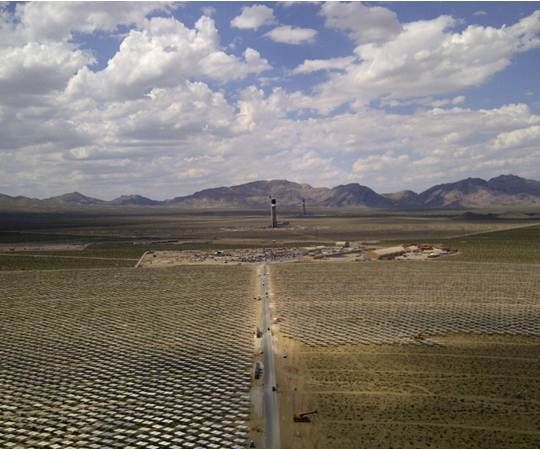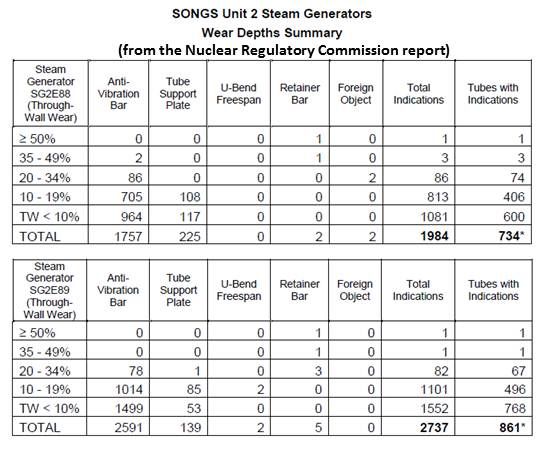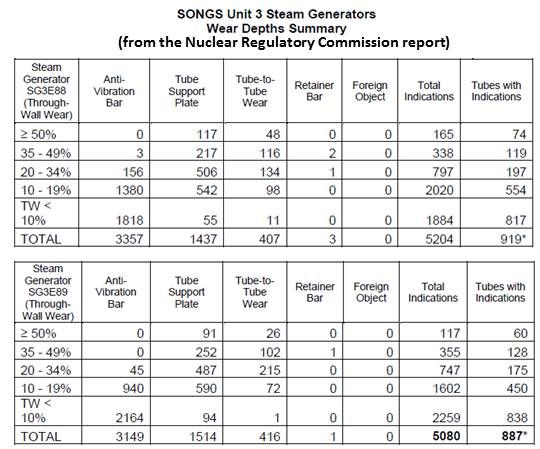The California Public Utilities Commission (CPUC) voted unanimously to launch a formal investigation of the nearly nine-month outage at the San Onofre Nuclear Generating Station (SONGS) Units Two and Three.
At the same meeting, the CPUC voted unanimously to approve revised power purchase agreements (PPAs) between BrightSource Energy (BSE) and Southern California Edison (SCE) (NYSE:EIX) for the electricity generated by BSE’s 500-megawatt Rio Mesa solar power tower project and a 250-megawatt unit of its Sonoran West power tower project.
The revised PPA for Rio Mesa makes contractual provisions for BSE’s planned deployment of more advanced solar power tower technology. The revised Sonoran West PPA allows for the incorporation of thermal storage.
More power capacity and stored generating capacity will allow the plants the flexibility to serve the grid in ways that help balance transmission system supply and demand and make electricity delivery more reliable.

In an early August CPUC debate about the SONGS outage, Commissioner Michael Florio called for the Commission to issue an Order Instituting Investigation (OII) of SONGS. Chair Michael Peevey said it was too soon. But, Peevey told Florio and the Commission, if operator and 78 percent owner SCE could not get at least one unit of the nuclear plant on-line for “at least 100 continuous hours of operation” by November 1, the nine continuous months out of service would require SCE “to file notice pursuant to Section 455.5 of the Public Utilities Code.”
Such a filing, Peevey explained, “requires this Commission to institute an investigation within 45 days.” That investigation will now go forward.
What initially appeared to be a maintenance issue at SONGS Units Two and Three in January was soon diagnosed as failed steam generators. Both units have been offline ever since.
Unit Two went on-line in August 1983 and Unit Three went on-line in April 1984. Both rely on an older technology built by Combustion Engineering (subsequently bought by Westinghouse).
Mitsubishi Heavy Industries (TYO:7011) replaced the two steam generators of the 1,172-megawatt Unit Two in January 2010 and the two steam generators of the 1,178-megawatt Unit Three in January 2011. (The SONGS Unit One went on-line in January 1968, was built to last until 2004, but was decommissioned in 1992 due to wear.)
The steam generators are where the heat generated by the light water reactors turns water into the steam that drives the facilities’ electricity-generating turbines. Such turbines also generate electricity when driven by steam created by boiling water with coal, natural gas, geothermal stations or concentrating solar power plants.
Each SONGS steam generator is 65 feet tall and weighs 1.3 million pounds. Each has two large U-shaped tubes, which have 9,727 U-shaped, three-quarter-inch-diameter tubes running through them.
The failure of a steam generator tube, wrote Nuclear Regulatory Commission (NRC) Public Affairs spokesperson Lara Uselding in March, “is a problem, because radioactive water that passed over the nuclear reactor and into the steam generator may escape into the created steam through a hole in the tube.” The radioactive steam could eventually escape to the environment.
To prevent radioactive leaks, plant operators perform regular inspections. If a tube is found to be severely worn, it is plugged.
SCE reported wear and plugging of tubes in of both units in January.
Vermont nuclear watchdog group Fairewinds Associates, at the request of Friends of the Earth, used NRC data to compare “the replacement steam generator plugging at both San Onofre Units Two and Three to the replacement steam generator plugging history for all other replacement steam generators at U.S. nuclear power plants.”
The San Onofre reactors, it concluded, “plugged 3.7 times as many steam generator tubes than the combined total of the entire number of plugged replacement steam generator tubes at all the other nuclear power plants in the U.S.”


In the scramble to keep electricity customers supplied after the shutdown, SCE, San Diego Gas and Electric (SDG&E) (NYSE:SRE), the other major co-owner with a 20 percent stake, and the California Independent System Operator (the ISO) brought retired facilities back, inaugurated new transmission, and hardened demand response capabilities. Their efforts allowed Southern California to get through the summer without a power failure.
The CPUC will now investigate the “reasonableness and necessity” of the decisions of SCE and SDG&E leading up to, and subsequent to, the January outage, and it will consider the future of SONGS.
The investigation could result in the utilities being required to return “over $800 million in fixed costs (rate base)” and “over $300 million in annual variable costs (operation and maintenance)” that were passed to ratepayers, according to CPUC documents.
The CPUC could also prohibit the utility-owners from passing the $671 million SONGS repair bill on to their ratepayers.
Several nuclear industry watchers, including Geesman and Dickson Partner John Geesman, formerly of the California Energy Commission, told GTM in August this could be a potentially significant financial hit for SCE, which in its last quarterly report acknowledged already being in dire financial straits.
The urgency of SCE’s position is accentuated by the fact that Nuclear Electric Insurance Limited (NEIL), the SONGS nominal insurer, according to Geesman, is less an insurance company than an industry pool, and it is unclear what its resources or responsibilities are.



